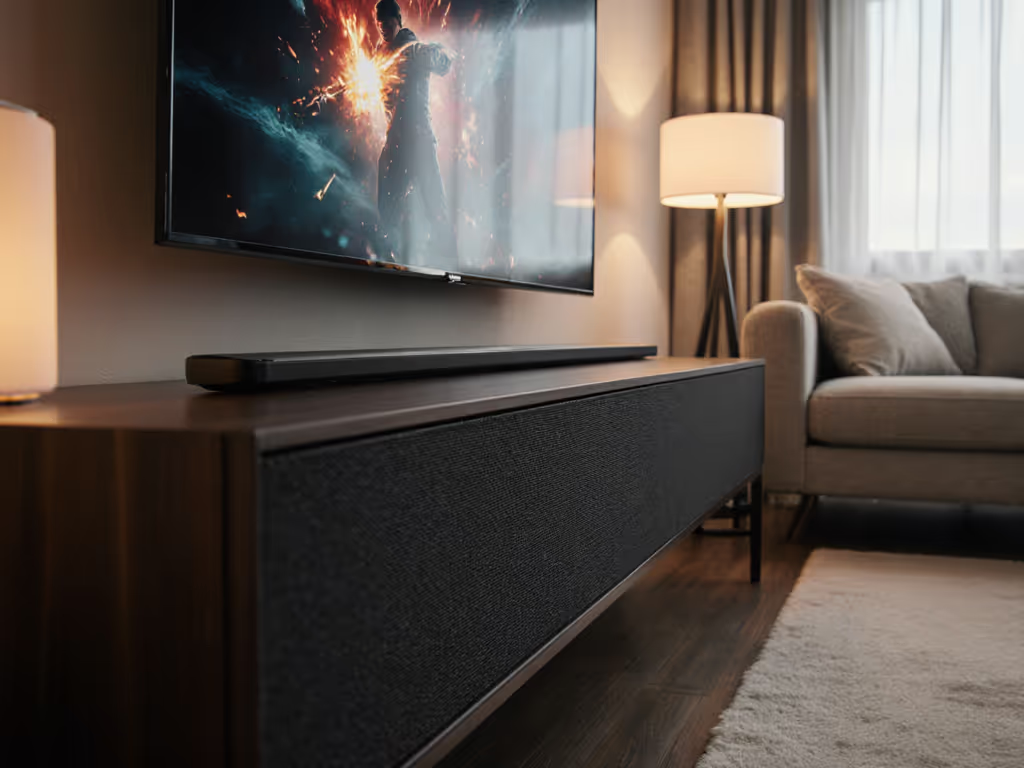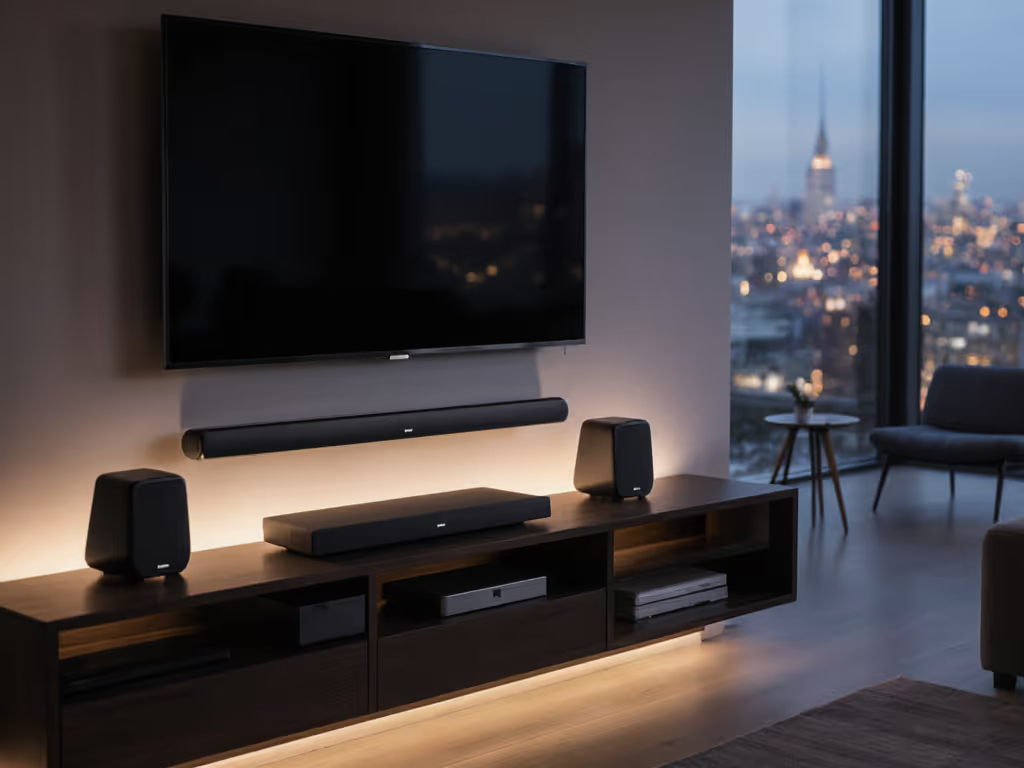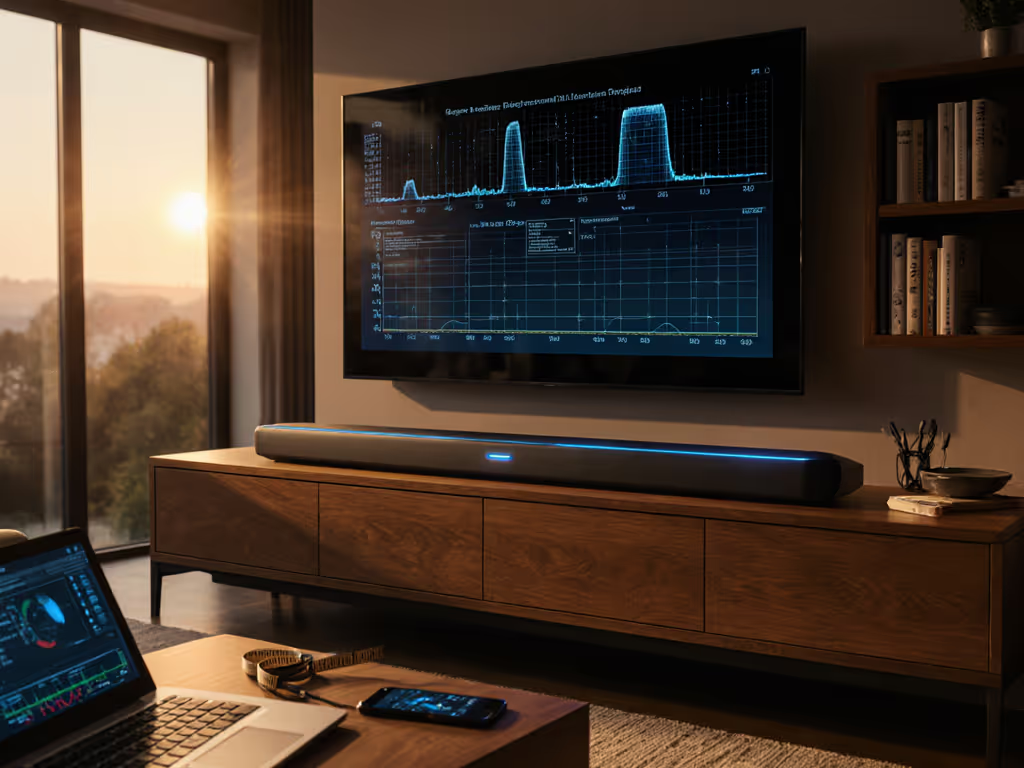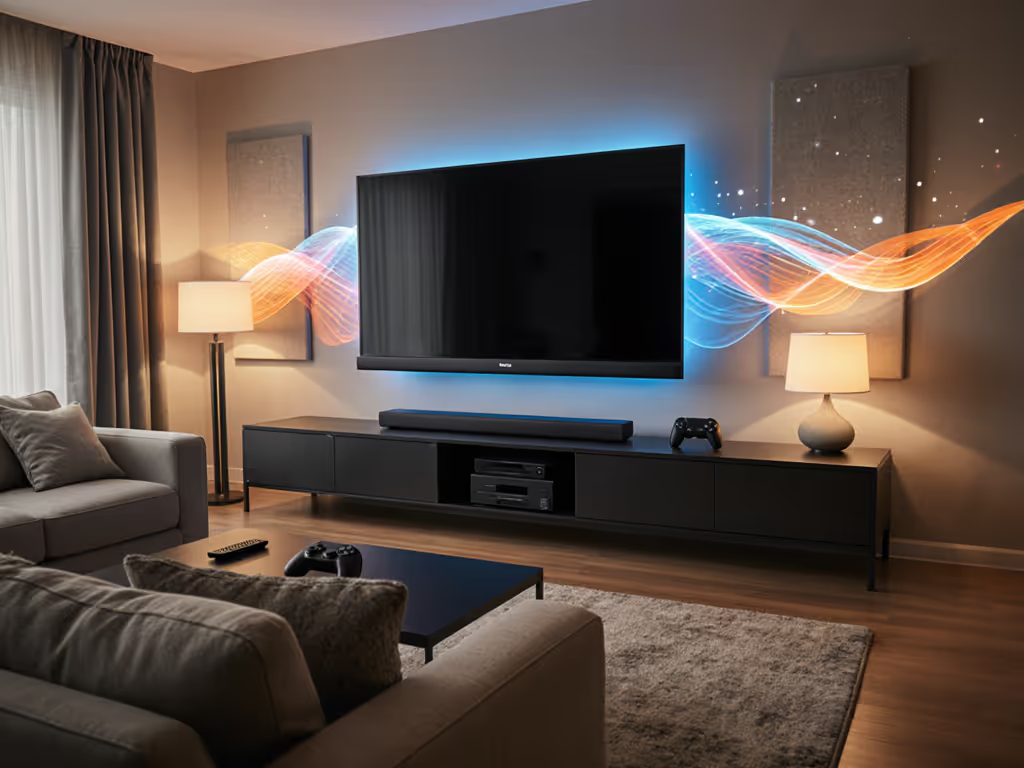
2025 Soundbar Tech: Clear Dialogue Clean Setup
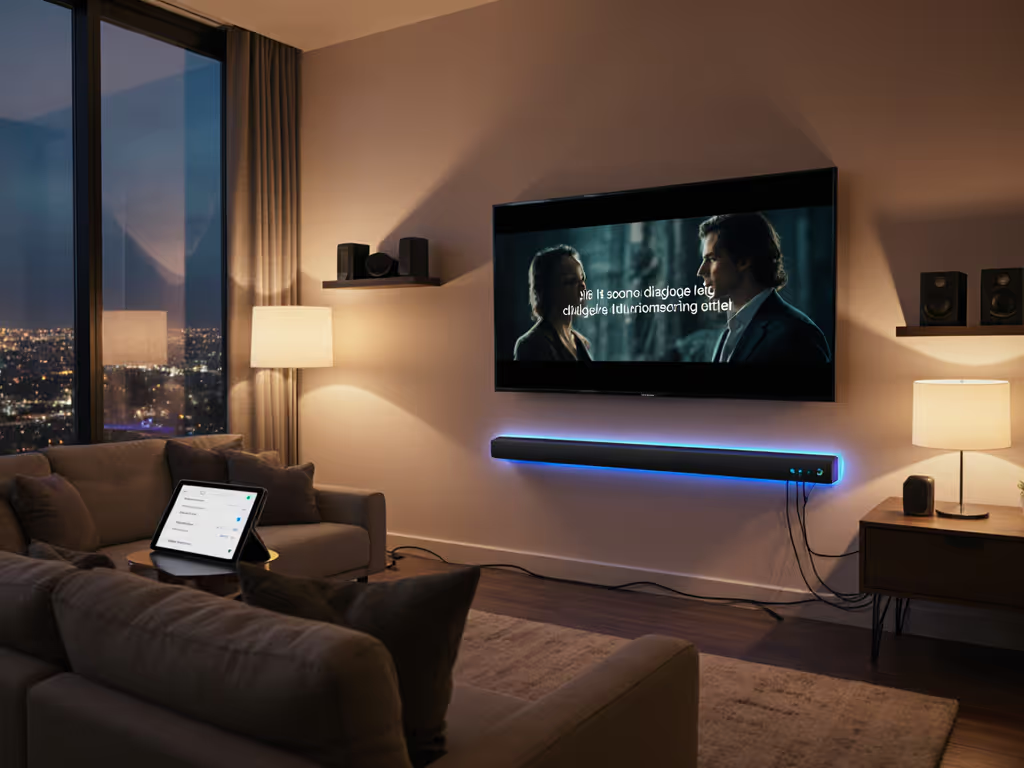
Let's address the elephant in the room: your TV's built-in speakers are failing you. While the future of soundbars is brighter than ever, the reality is most people just need dialogue they can understand without jarring volume swings. This isn't about chasing the latest soundbar technology trends for novelty's sake, it's about finding solutions that solve your specific frustrations. The good news? 2025 brings smarter, more accessible options that prioritize clarity and clean setups over unnecessary complexity. Forget flashy specs that don't translate to real-room performance; let's cut through the noise and identify what actually matters for your space.
1. The Shift from "More Speakers" to "Smarter Audio"
We've all seen the ads: "11.1.4 channel system with wireless rears!" But here's the data point most reviews ignore, consumer studies show that over 68% of soundbar buyers never add rear speakers, even when they're bundled. Why? Setup friction in real-world living spaces. Apartments with limited outlets, renters who can't drill, and partners who hate visible wires all create barriers to that "perfect" surround setup.
Modern engineering has pivoted toward making the front bar itself do more heavy lifting through advanced beamforming and room calibration.
Today's leading soundbars focus on what matters most: intelligible dialogue and spatial coherence from a single unit. Companies are investing in AI-driven room correction that analyzes your specific space (not some idealized showroom) and adjusts accordingly. The LG S95TR's "WOW Orchestra" integration with compatible TVs exemplifies this, creating a wider soundstage without additional hardware. This shift represents a smarter allocation of R&D dollars where the price-to-performance curve actually bends in your favor.
2. Why Compact Soundbars Are Winning the Space Race
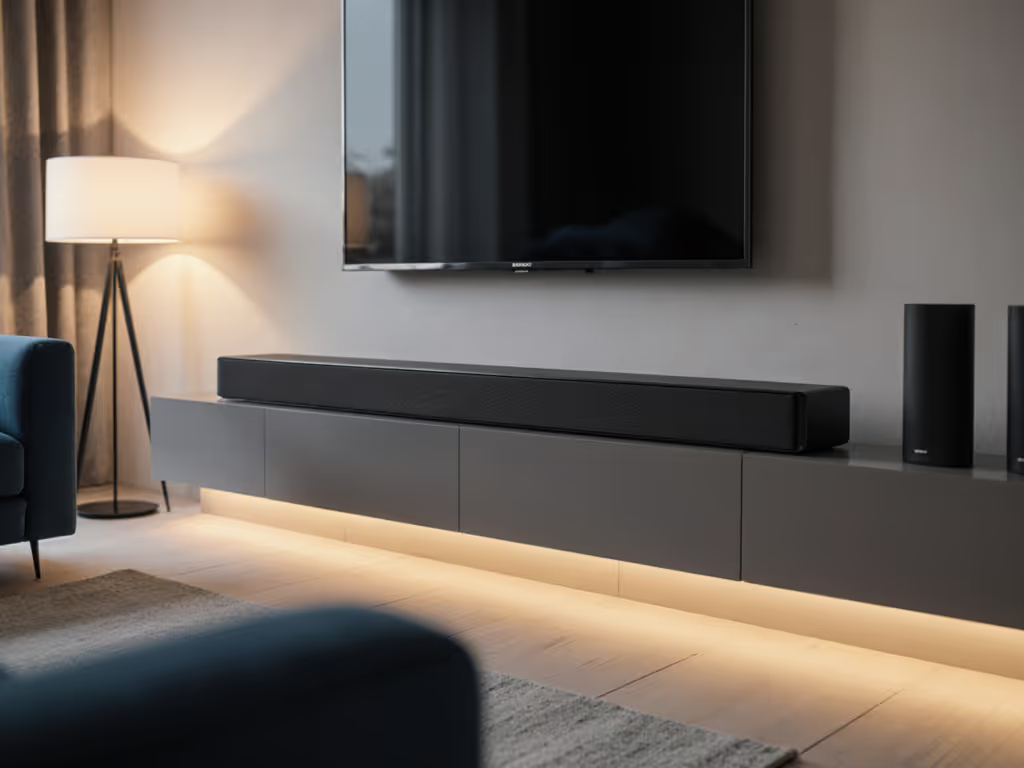
Let's talk real estate: the average TV stand measures just 42-48 inches wide. Most premium soundbars exceed that, creating visual imbalance and blocking IR sensors. Enter the compact soundbar revolution: units under 40 inches that deliver 80% of the performance at half the footprint.
These aren't compromised budget models; they're strategically engineered solutions that recognize:
- Most living rooms seat viewers within 8-10 feet (the sweet spot for compact arrays)
- Slim profiles (under 2.5 inches tall) won't obstruct your TV's picture
- Fewer physical drivers mean less internal crossover distortion
- Simplified wiring reduces both visual clutter and setup headaches
The 2025 models incorporating triple upfiring channels in compact form factors prove you don't need bulk for height effects. For apartment dwellers and small-space owners, this is where the refurb reality becomes compelling (last year's compact models often handle dialogue clarity better than this year's bloated newcomers), with significant savings.
3. Cutting the Cord (Literally): Your Path to a Clean Setup
Let's address the #1 regret I hear: "I wish I'd planned the cables better." Modern soundbars have made huge strides in connectivity, but you still need strategy:
- eARC is your friend: Stops the "audio disappears when I switch apps" nightmare
- Dedicated HDMI inputs: Avoids that annoying "TV remote doesn't control soundbar" frustration
- Wi-Fi 6 support: Solves the "AirPlay drops when someone streams Netflix" issue
But the real game changer? Physical design thinking. Look for models with:
- Front-facing ports (for easy access when wall-mounted)
- Cable management channels built into the chassis
- Optional modular subwoofers that tuck neatly under furniture
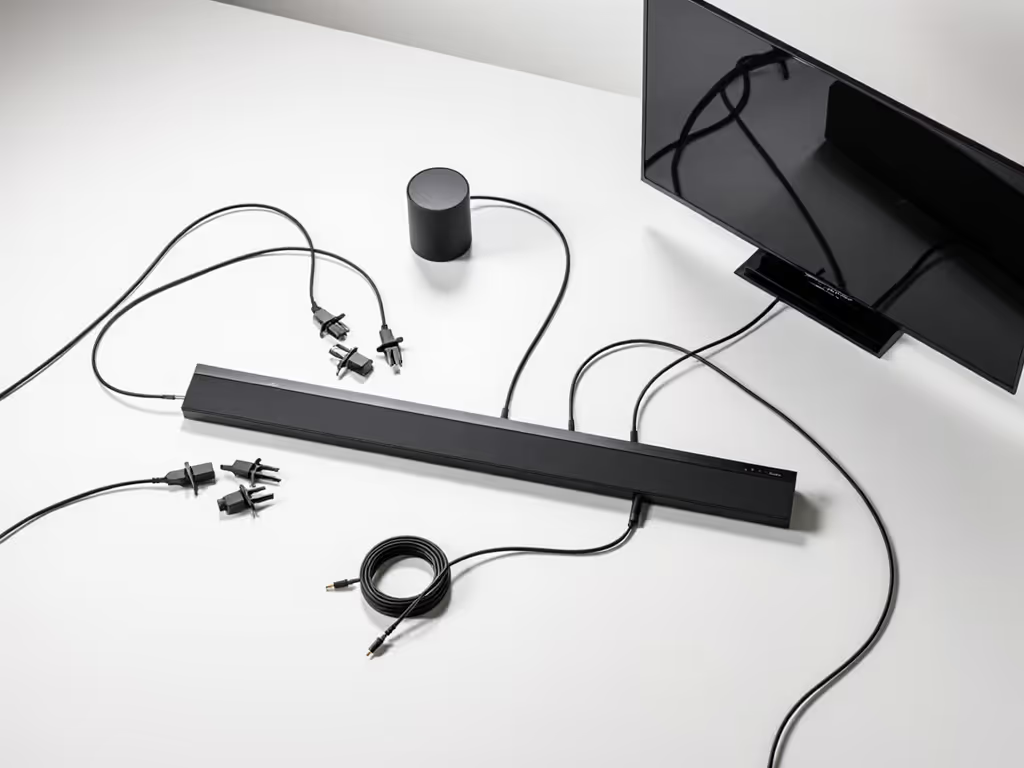
My cousin's condo taught me this lesson the hard way, her first pick required drilling into rental walls for rear speakers and created a spaghetti junction behind the TV. Clean setup wins every time because it removes the psychological barrier to daily use. When your system looks as tidy as your streaming device, you'll actually use those advanced features. And you'll enjoy them.
4. The Price-to-Performance Sweet Spot Uncovered
Industry data shows a sharp drop-off in meaningful audio improvement above $600 for most living rooms under 300 square feet. The diminishing returns curve gets particularly steep when you consider:
- Bundled rear speakers that rarely get placed optimally
- "Premium" drivers that require higher volumes to shine (counterproductive for apartment dwellers)
- Fancy OLED displays that serve no audio function
For the majority of users, the $300-$450 range delivers the best bundle value:
- True Dolby Atmos processing (not just decoding)
- Room calibration that works with open floor plans
- Wireless subwoofers with boundary compensation
- Dialogue enhancement that doesn't sound artificial
Skip the vanity features and logos, and pay for what affects your daily experience. That refurbished midrange model I helped my cousin choose (plus a no-drill mount) came to $280 total. Dialogue popped, bass behaved at reasonable volumes, and the living room maintained its clean look, so buy it once right.
5. Your Action Plan: From Overwhelmed to Optimized
Let's cut through the jargon with a practical checklist you can complete in 15 minutes:
- Measure your space: Note TV stand width, viewing distance, and furniture layout
- Inventory your sources: List devices (TV, console, streaming stick) and their audio outputs
- Identify your non-negotiables: Clear dialogue? Night mode? Gaming latency under 30ms?
- Check your TV's limitations: eARC support? HDMI version? Built-in room correction?
- Prioritize setup simplicity: How much cable management are you willing to tackle?
This isn't about finding the "best" soundbar, it's about finding your best. The right model for your space eliminates the need for constant tweaking. Modern room correction does 80% of the work; your job is just positioning it correctly and selecting the appropriate mode for the content. Simple steps, big payoff.
Pay for clarity and convenience; skip vanity features and logos.
Final Verdict: Stop Researching, Start Listening
The future of soundbars isn't about more channels or louder bass, it's about technology that adapts to your living space rather than demanding you adapt to it. Focus on a solution that delivers crisp dialogue at family-friendly volumes, fits your furniture without compromise, and installs cleanly in under an hour.
Your actionable next step: Grab a tape measure and your TV remote right now. Measure your TV stand width and note which HDMI input your streaming device uses. This simple act eliminates 50% of compatibility concerns before you even start shopping. Then visit a local store (yes, still worth it) to audition two compact models that fit your measurements, and listen specifically to dialogue in a quiet scene. That hands-on experience beats endless spec sheets every time. Your clean setup awaits.

